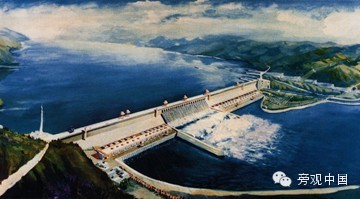
李先达 | 文
2014年3月24日下午,中国长江三峡集团公司宣布免去曹广晶的董事长、党组书记职务,免去陈飞的总经理职务,两人另有任用。
目前三峡集团正对公司范围内的所有招投标资料全部进行封存备查,任何人都不得对原始资料进行修改、转移甚至销毁,各相关部门单位被要求全力配合,做好资料查询取证等工作。
这意味着什么?也许不久之后就会揭晓。
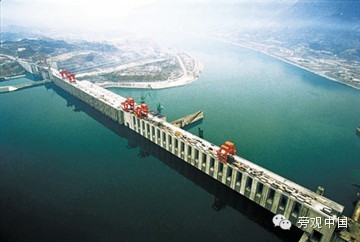
三峡和三峡工程,很熟悉,却又有点陌生。你去过风景奇美的老三峡么?记得当年浩大的动迁安置么?在电视里看过大坝合龙的场景么?
探索频道(Discovery Channel)评价它是“长城之后中国最大规模的建筑工程”。而在国家地理(National Geographic)的纪录片中,它是“地球上最大的混凝土建筑物”。
在西方媒体眼中,耗时17年,总投资数千亿人民币的三峡工程是中国政府执行力的缩影,而工程背后的环境、经济、文化、社会因素,使它成为了研究中国当代发展的活化石。
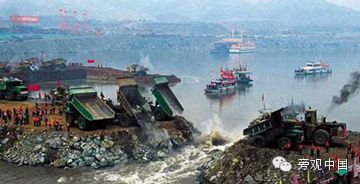
英国《星期日泰晤士报》(The Sunday Times)记者Michael Sheridan曾长期追踪三峡工程,他在一篇长文中详述了自己的所见所感。
文章以历史开篇。对政治敏感得略显过度的Sheridan不会放过当代中国的开国年代:
对于中国历代皇帝来说,征服江河一直是未能实现的梦想。而在新中国初期,由于战争和动乱,建造大坝的计划也并没有实现。尽管对毛泽东来说,长江上的三峡大坝正是一场能让他津津乐道的“斗争”。
To subdue the waters was a dream that eluded Chinese emperors. Early schemes to build a dam in the Republican period came to naught amid war and chaos. For Mao Zedong, the Three Gorges Dam on the Yangtze River was the kind of titanic struggle he relished.

▲ 1953年2月,毛泽东乘“长江号”视察,在舰上听取长江水利委员会主任林一山的汇报,提出兴建三峡大坝的远景设想。此后至1958年1月“南宁会议”不到5年时间,毛泽东为了三峡工程和长江水利建设问题先后6次召见林一山。
1994年,三峡工程正式动工,Sheridan写道:
在那时,大坝已不仅仅是一个水利工程了,它同样是一个政治宣言,共产党已经征服了大自然,使农民不再受迷信、汛期洪水和饥荒的威胁。
By then the dam was more than a hydropower project, it was also a political statement that the Communist Party had conquered the natural forces that had yoked peasants to superstition, seasonal floods and famine.
1999年,Sheridan终于来到三峡工程实地采访。人类历史上罕见的百万大移民和中国政府的社会动员能力让他印象深刻。
我们踏上舢板,进入一条隐藏三峡深处的支流,探寻那些几个世纪来无人打搅的贫困的农民。就在几英里外,新建好的公寓已经矗立起来,等待着他们搬入。对于官方媒体而言,这是一个社会主义实践。
We sneaked off in a sampan up a tributary buried in the Three Gorges to find peasants living in poverty as in centuries past. A few miles away, new apartment blocks awaited them on the heights. For the state media, this was socialism in action.
在那些位于淹没水位线以下的墓地中,我们看到墓碑已经被打碎,坟墓被打开。移民新城旁的混凝土新墓已经就绪,准备接受先人遗骨迁入,如果不这样,农民是不同意的。
At cemeteries everywhere below the future water line we saw headstones smashed and the graves opened. Concrete tombs around the new towns stood ready to receive the bones of ancestors, without which the peasants would not move.
在行程将结束时,我所看到的一切已经足以让我提出问题:中国政府是如何在不引发社会动荡的情况下做到这一切的。作为当年外国媒体的一个典型例子,我显然低估了中国政府。
At the end of the voyage I had seen enough to question how the Chinese government could achieve their goal without major social unrest. Typically for the foreign media of the time, I underestimated the government.

▲ 2004年7月20日,重庆市三峡库区的最后一批外迁移民驶离万州至上海。2000年8月至2004年8月,因三峡水利工程建设,中国政府历时5年,从三峡库区向包括上海、江苏、浙江、广东等中东部地区11省市外迁移民16.6万人。
七年之后的2006年,在官方语境中,三峡工程已经取得了巨大的成功。Sheridan第二次前往三峡,这时的他对如何观察中国已经相当熟悉,于是:
在江边每一座栈桥上,都有这些类型的故事:腐败、拒绝补偿、侵吞财产、暴力拆迁、虚假的新房承诺,以及警察严管。
At every landing stage there were stories of corruption, compensation denied, stolen property deeds, thugs smashing up houses, false promises of new homes and heavy-handed policing.
最后的一息抗议出现在2006年4月。在有30万人口的巫山,数百位农民组织了集会。警察驱散了他们。第二天,一个“政治工作组”从重庆前来。他们命令所有船只留在港内,进行身份核查。
The last gasp of protest came at a rally by hundreds of farmers in April 2006 at Wushan, a city of 300,000. The police broke it up. The next day a "political work team" arrived from Chongqing. They ordered every boat to stay in port and imposed identity checks.
Sheridan并非只看到了阴暗一面,他承认,工程给当地经济带来巨大效益,也有大量中国人获利:
政权的批评者要面对另一个苦涩的现实,在让大坝创造的赢家多于输家这方面,党做得异常地成功。
There was another unpalatable truth for the regime's critics. The party was remarkably successful in creating more winners than losers from the dam.
大坝的建造本身就带来了巨大的利润和增长。酒店、餐厅、商店以及随后的服务业创造了新的就业机会。在宜昌,宣传条幅称颂城市的快速扩张,从10万人到140万人仅仅用了15年。
The building boom alone threw off cash and growth in plenty. Jobs in hotels, restaurants, shops and services followed. In Yichang, banners praised the city's expansion from 100,000 to 1.4 million people in only 15 years.
到2006年,大坝已经改变了水路贸易。更深的水位意味着在长江航行已经不再仅限于潜水的舢板和渡船。历史上第一次,万吨级轮船从重庆直达上海,载满了汽车、电脑、煤炭和钢铁。
By 2006, the dam had transformed river trade. Deep waters meant that navigating the Yangtze was no longer limited to shallow draught sampans and ferries. For the first time, 10,000 ton vessels could sail from Chongqing to Shanghai, laden with cars, computers, coal and steel.
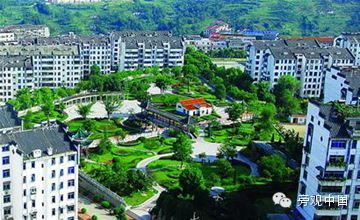
▲ 秭归新县城园林小区
2010年,三峡库区达到了最大蓄水深度,这意味着工程上的巨大成功。但在2008年的汶川地震之后,中国民众已经开始愈加关注三峡工程的环境影响。也就是在此时,Sheridan开始了又一次三峡之旅。
在我的第三次任务中,一路沿江走来,任何人都会发现江水被轮船翻滚出的沉积物弄脏了。在旱季,河底发出恶臭。
Along the river, on my third assignment, anyone could see the water stained by sediment churned up by the ships. In the early dry season, it stank.
由于太多的人们在网上讨论,官方媒体已经无法忽略这些问题。他们承认,由于地震活动增加,该地区已经发生了97次滑坡。在2010年初,有9324处地段被标为危险。
Now the state media, unable to ignore events with so many people online, admitted that increased seismic activity had led to 97 landslides and that 9,324 dangerous sites had been identified in the first months of 2010.
最大的失败之处,也正是国家设计者们倾注最多心力的问题:水资源管理。大坝没能缓解湖北、湖南和江西的旱情,因为放多少水、什么时候放水的问题充满争议。
The biggest failure was one that continues to preoccupy the country's planners: water management. The dam did not relieve drought in the provinces of Hubei, Hunan and Jiangxi because of arguments over how much water to release and when to do it.
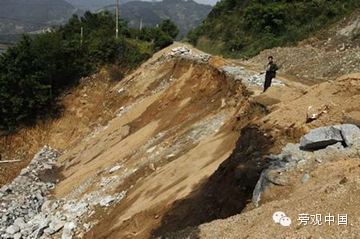
▲ 2009年5月2日,位于三峡大坝上游约15公里处的秭归新县城区域出现多处山体滑坡,影响当地居民生活。CFP
写到这里,Sheridan担忧起同样规模巨大的“南水北调”工程:
“南水北调”将花费至少3500亿人民币。同样地,这一次科学家们依然在警告可能带来的极端环境变化。
The "South-North" project will cost at least 350 billion yuan. Once again, scientists are warning of dire environmental effects.
批评者认为,钱更应该花在水资源保护、更好的基础设施建设,以及让工业用水效率提高。不过相比这些需要辩论和共识的复杂政策调整,中国领导人更倾向于大型的建设工程。
Critics say the money would be better spent on water conservation, better infrastructure and making industry use scarce supplies more efficiently. Chinese leaders prefer grand projects above complex policy adjustments requiring debate and consent.
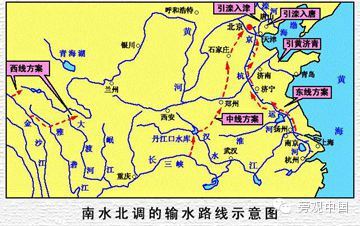
对Sheridan来说,这种偏好是中国发展至今的逻辑所在。但人人都已明白,转型不仅不可避免,也是迫在眉睫:
对于习近平主席来说,下一步改革并不会像建设大坝那样简单。没人会质疑他们给出一项成果的能力,不过……真正的考验还没有到来。
Yet President Xi Jinping's next reforms will not be as simple as building a dam…Nobody should doubt their ability to impose an outcome. However…That test is yet to come.
(完)
-----------
○ 关注“旁观中国”微信公众号“on_china”,或扫描下图二维码,获得每日完整版推送。我们为您精选全球舆论对中国话题的报道、分析和评论,发掘“吐槽”与深意。
○ 联系我们:博客:旁观中国;新浪微博:旁观中国OnChina;腾讯微博:旁观中国
○ 欢迎发来评论或文章推荐,可直接发微信,或邮件至:onchina@caixin.com

0
推荐




 京公网安备 11010502034662号
京公网安备 11010502034662号 